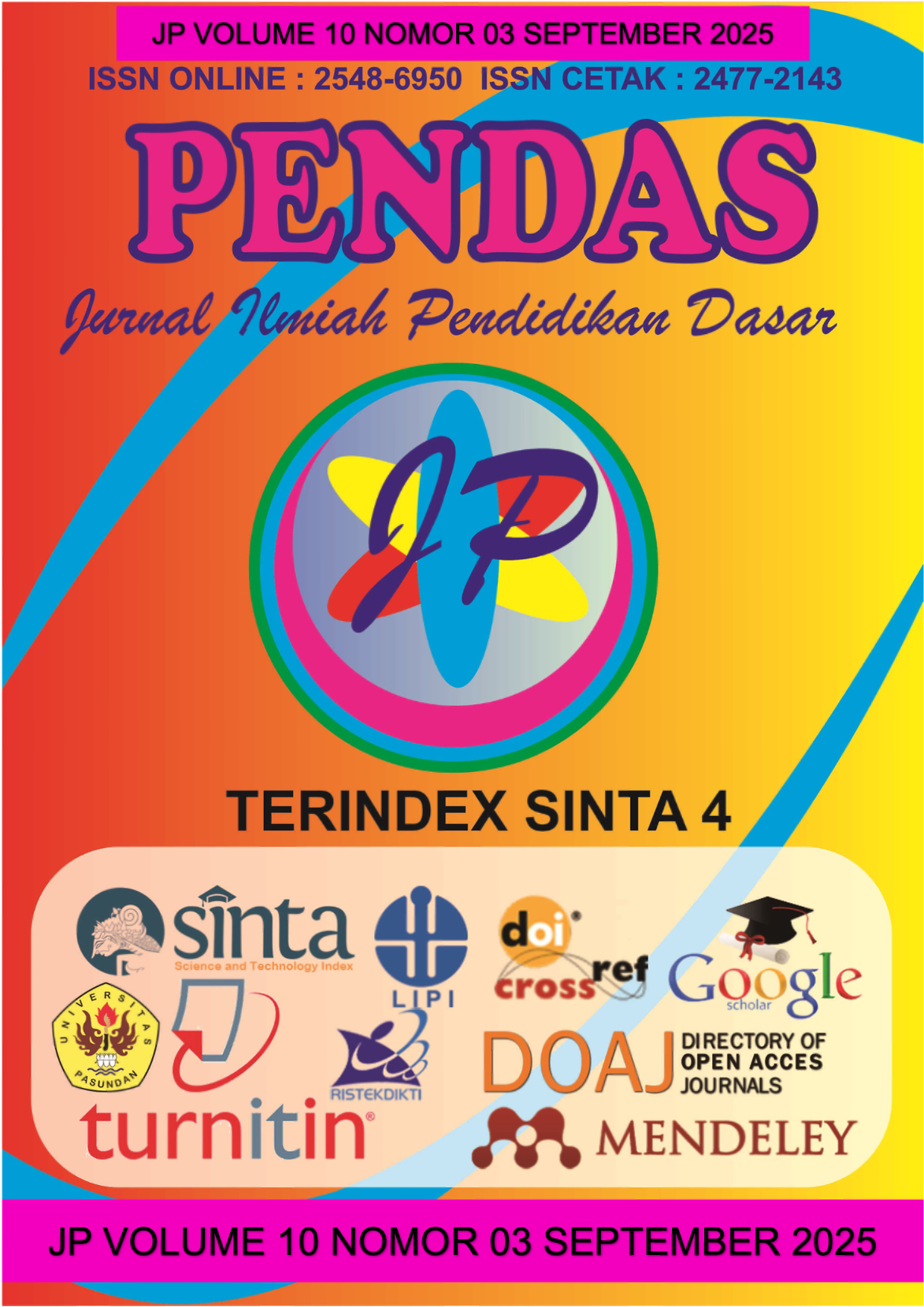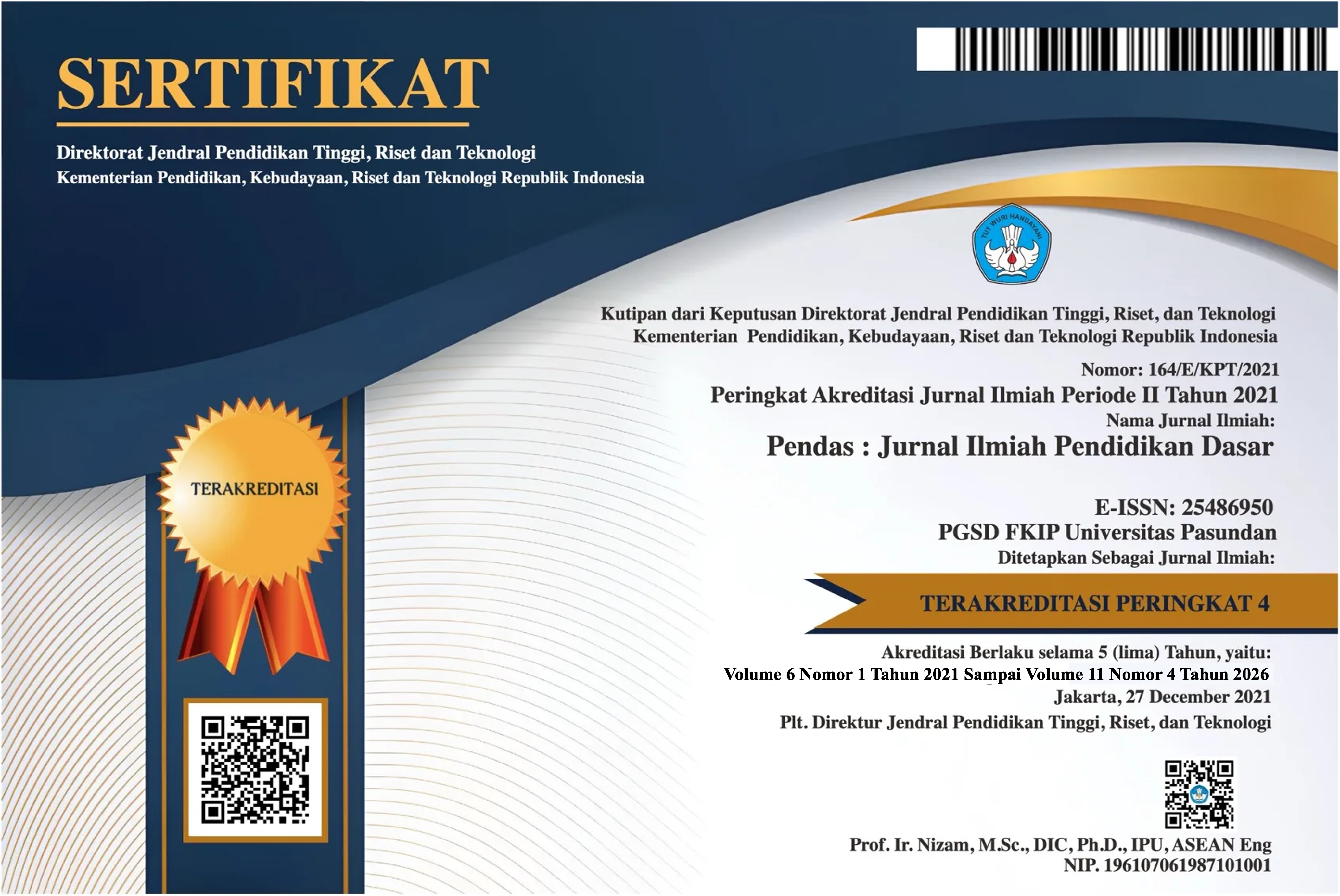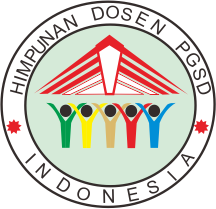Strategi Deep Learning Berbasis Kontekstual untuk Meningkatkan Kecerdasan Praktis dalam Pembelajaran Matematika
DOI:
https://doi.org/10.23969/jp.v10i03.28890Keywords:
Deep learning , Practical intelligence , Mathematics instructionAbstract
This study aims to examine contextual-based deep learning strategies for enhancing practical intelligence in mathematics learning. The study was conducted using a literature review method by analyzing various scientific publications related to mathematical foundations, latent context representation, and pedagogical implementation within deep learning-based instructional models. The findings reveal that deep learning possesses a strong mathematical foundation, including linear algebra, calculus, probability theory, and optimization, which are essential in developing intelligent learning models. The innovative representation of latent context contributes to adaptive learning that responds to the dynamic needs of learners. However, several limitations are identified within the pedagogical dimension, such as an imbalance in technology integration, weak application of learner-centered pedagogical principles, and a gap between mathematical models and educational needs that are contextual, personal, and humanistic. This study highlights that the effectiveness of deep learning implementation in education, particularly in mathematics learning, requires an integrative approach that combines the strength of mathematical foundations with pedagogical strategies that are contextual and transformative. The findings contribute significantly to the development of adaptive, reflective, and relevant learning models to address the challenges of 21st-century education.
Downloads
References
Agrawal, S., & Singh, R. (2022). Recent Improvements of Gradient Descent Method for Optimization. International Journal of Computer Applications. https://doi.org/10.5120/ijca2022921908
Agyeman, N. Y. B. (2024). Deep learning in high schools: exploring pedagogical approaches for transformative education. HUMANIKA. https://doi.org/10.21831/hum.v24i2.71350
Chen, J., & Singh, C. K. S. (2024). A Systematic Review on Deep Learning in Education: Concepts, Factors, Models and Measurements. Journal of Education and Educational Research. https://doi.org/https://doi.org/10.54097/gzk2yd38
Crossa, J., López, A. M., & López, O. M. (2022). Fundamentals of Artificial Neural Networks and Deep Learning. Multivariate Statistical Machine Learning Methods for Genomic Prediction. https://doi.org/10.1007/978-3-030-89010-0_10
Debus, R., & Gordon, C. (2002). Developing deep learning approaches and personal teaching efficacy within a preservice teacher education context. The British Journal of Educational Psychology, 72 Pt 4, 483–511. https://doi.org/10.1348/00070990260377488
Dénes-Fazakas, L., Sándor-Rokaly, K., & Szász, L. (2024). Exploring the Integration of Differential Equations in Neural Networks: Theoretical Foundations, Applications, and Future Directions. 2024 IEEE International Conference on Computational Intelligence (CINTI). IEEE. https://doi.org/https://doi.org/10.1109/cinti63048.2024.10830908
Eldar, Y, Boyd, S., & Shlezinger, N. (2022). Model-Based Deep Learning: On the Intersection of Deep Learning and Optimization. IEEE Access, 10, 115384–115398. https://doi.org/10.1109/ACCESS.2022.3218802
Eldar, Yonina, Whang, J., Dimakis, A., & Shlezinger, N. (2020). Model-Based Deep Learning. Proceedings of the IEEE, 111, 465–499. https://doi.org/10.1109/JPROC.2023.3247480
Fan, J., Cong, & Zhong, Y. (2019). A Selective Overview of Deep Learning. Statistical Science : A Review Journal of the Institute of Mathematical Statistics, 36 2, 264–290. https://doi.org/10.1214/20-STS783
Gavranovi’c, B. (2024). Fundamental Components of Deep Learning: A category-theoretic approach. ArXiv, abs/2403.1. https://doi.org/10.48550/arXiv.2403.13001
Grohs, P., Berner, J., Kutyniok, G., & Petersen, P. (2021). The Modern Mathematics of Deep Learning. ArXiv, abs/2105.0. https://doi.org/10.1017/9781009025096.002
Guiwen, J. (2023). A Deep Learning-oriented Practical Training Course for Computer Application Skills. International Journal of Emerging Technologies in Learning, 18(6), 28–41. https://doi.org/10.3991/ijet.v18i06.38011
Han, Y., & Song, Z. (2024). The Dilemma and Improvement of College Students’ Deep Learning under the Background of Smart Education. Education Reform and Development. https://doi.org/https://doi.org/10.26689/erd.v6i4.6847
Hsieh, H., & Shannon, S. (2005). Three Approaches to Qualitative Content Analysis. Qualitative Health Research, 15, 1277–1288. https://doi.org/10.1177/1049732305276687
Kovac, V. B., Nome, D. Ø., & Jensen, A. R. (2023). The why, what and how of deep learning: critical analysis and additional concerns. Education Inquiry. https://doi.org/https://doi.org/10.1080/20004508.2023.2194502
Kriegeskorte, N., & Golan, T. (2019). Neural network models and deep learning. Current Biology, 29. https://doi.org/10.1016/j.cub.2019.02.034
Li, Z. (2024). Applications of deep learning in mathematics education: A review. Applied and Computational Engineering. https://doi.org/https://doi.org/10.54254/2755-2721/71/20241644
Liquet, B., Moka, S., & Nazarathy, Y. (2024). Menavigasi Dasar-Dasar Matematika: Pengantar Pembelajaran Mendalam dalam Sains. In Advances in Experimental Medicine and Biology (pp. 75–95). Springer. https://doi.org/https://doi.org/10.1007/978-3-031-64892-2_5
Masuku, M. M., Jili, N. N., & Sabela, P. T. (2020). Assessment as A Pedagogy and Measuring Tool in Promoting Deep Learning In Institutions of Higher Learning. International Journal of Higher Education, 10(2), 274. https://doi.org/https://doi.org/10.5430/IJHE.V10N2P274
Moore, N., Tuminaro, R., Cyr, E., Siefert, C., & Ohm, P. (2023). Graph Neural Networks and Applied Linear Algebra. ArXiv, abs/2310.1. https://doi.org/10.48550/arXiv.2310.14084
Nassar, M. R., McGuire, J. T., Ritz, H., & Kable, J. W. (2022). Adaptive Learning through Temporal Dynamics of State Representation. The Journal of Neuroscience, 42(5), 823–836. https://doi.org/https://doi.org/10.1523/jneurosci.0387-21.2022
Neuendorf, K. (2015). Content Analysis. https://doi.org/10.1002/9781118541555.wbiepc065
Paquette, L., & Pinto, J. (2024). Deep Learning for Educational Data Science. ArXiv, abs/2404.1. https://doi.org/10.48550/arXiv.2404.19675
Petersson, C., Gerken, J., Aronsson, J., Persson, D., Carlsson, O., Linander, H., & Ohlsson, F. (2021). Geometric deep learning and equivariant neural networks. Artificial Intelligence Review, 56, 14605–14662. https://doi.org/10.1007/s10462-023-10502-7
Qin, Y., Menara, T., Oymak, S., & Others, et al. (2022). Representation Learning for Context-Dependent Decision-Making. Proceedings of the American Control Conference (ACC). IEEE. https://doi.org/https://doi.org/10.23919/ACC53348.2022.9867204
Rameshkumar, T., Jesmalar, L., Cheekati, V. R., Priya, J. P., Suthar, M. B., Elumalai, M., … Anbuselvan, B. (2025). Mathematical Foundations of Deep Learning: Theory, Algorithms, and Practical Applications. Panamerican Mathematical Journal, 35(3s), 488–492. https://doi.org/https://doi.org/10.2139/ssrn.5066774
Shrestha, A., & Mahmood, A. (2019). Review of Deep Learning Algorithms and Architectures. IEEE Access, 7, 53040–53065. https://doi.org/10.1109/ACCESS.2019.2912200
Testolin, A. (2020). The Challenge of Modeling the Acquisition of Mathematical Concepts. Frontiers in Human Neuroscience, 14, 100. https://doi.org/https://doi.org/10.3389/FNHUM.2020.00100
Tian, X., Zhao, J., & Nguyen, K. T. (2022). Practical Research on Primary Mathematics Teaching Based on Deep Learning. Scientific Programming, 2022, 1–7. https://doi.org/10.1155/2022/7899180
Unger, M., Tuzhilin, A., & Livne, A. (2020). Context-Aware Recommendations Based on Deep Learning Frameworks. ACM Transactions on Management Information Systems, 11(2), 8–15. https://doi.org/https://doi.org/10.1145/3386243
Wang, Y., & Zhang, X. (2024). A study of the effect of peer assessment on children’s critical thinking in a kindergarten craft course. International Journal of Technology and Design Education, 35(2), 431–459. https://doi.org/10.1007/s10798-024-09914-5
Warburton, K. (2003). Deep learning and education for sustainability. International Journal of Sustainability in Higher Education, 4, 44–56. https://doi.org/10.1108/14676370310455332
Winje, Ø., & Løndal, K. (2020). Bringing deep learning to the Surface: A systematic mapping review of 48 years of research in primary and secondary education. Nordic Journal of Comparative and International Education. https://doi.org/https://doi.org/10.7577/NJCIE.3798
Zech, J., & Petersen, P. (2024). Mathematical theory of deep learning. ArXiv, abs/2407.1. https://doi.org/10.48550/arXiv.2407.18384
Zhang, Y., Wang, X., & Gao, X. (2018). Adaptive Latent Representation for Multi-view Subspace Learning. 2018 24th International Conference on Pattern Recognition (ICPR). IEEE. https://doi.org/https://doi.org/10.1109/ICPR.2018.8545221
Zubić, N., De Solda, F., Sulser, A., & Others, et al. (2024). Limits of Deep Learning: Sequence Modeling through the Lens of Complexity Theory. In arXiv preprint. https://doi.org/https://doi.org/10.48550/arxiv.2405.16674
Downloads
Published
Issue
Section
License
Copyright (c) 2025 Pendas : Jurnal Ilmiah Pendidikan Dasar

This work is licensed under a Creative Commons Attribution 4.0 International License.



















